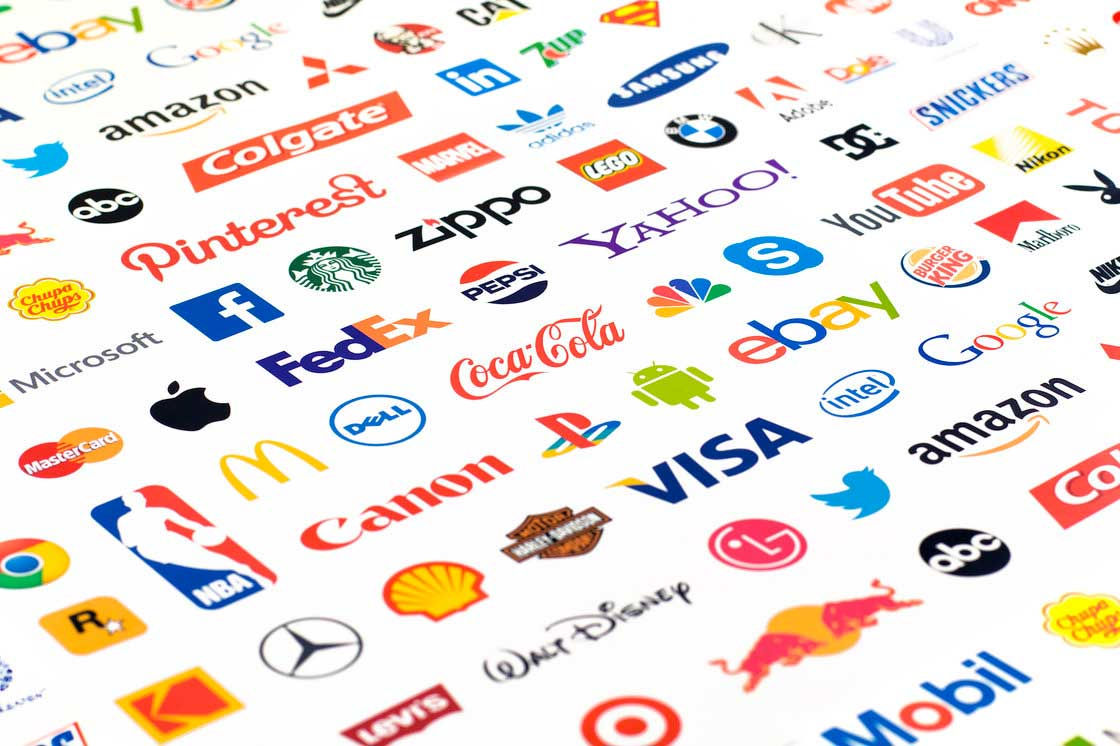Your logo is a visual representation of your brand’s identity, mission, and values. It is often the first thing that your customers see and it can have a significant impact on their perception of your business. A well-designed logo can help you stand out in a crowded marketplace and build a strong and lasting relationship with your customers. However, with so many different types of logos to choose from, it can be challenging for you to know where to start.
In this article, we will explore eight types of logos and their respective characteristics, providing you with informative insights and examples to help you make an informed decision for your own business.
1. Wordmark Logos

A wordmark logo consists of the company’s name designed in a unique and creative way. Examples of wordmark logos are the Google, Coca-Cola and FedEx logos.
This type of logo is perfect for businesses with short and memorable names and they are also a popular choice for businesses that want to create a strong and memorable brand identity. They are simple yet effective, and they allow businesses to convey their message and values in a clear and concise way.
2. Lettermark or Monogram Logos

A lettermark or monogram logo is a type of logo that consists of one or more letters, usually the initials of a company or brand name, stylized in a unique and creative way. Examples of companies with lettermark logos are IBM, Louis Vuitton and HP.
Lettermark logos are often used by businesses that have long or complicated names, as they allow the brand to be easily recognized and remembered by using a shortened version of their name. Lettermark logos are also versatile and can be used in a variety of contexts. They can be used on business cards, websites, social media profiles, and other marketing materials. Because they are text-based, they can be easily resized and adapted to fit different formats and sizes.
3. Pictorial Logos

Pictorial logos, also known as symbol or iconic logos, use a simple and recognizable image to represent a company. Examples include Apple, Target, and Nike.
The primary benefit of a pictorial logo is that it can convey a lot of information about a brand or product in a simple and visually appealing way. By using a unique and creative graphic or visual element, businesses can create a visual identity that is instantly recognizable to their target audience. This can help businesses stand out from the competition and establish a strong brand presence.
Because they are graphic-based, pictorial logos can be easily resized and adapted to fit different formats and sizes.
4. Abstract Logos

An abstract logo consists of a unique and creative graphic or visual element that does not directly represent the company or brand. The Pepsi, Adidas and the MasterCard logos are examples.
Abstract logos are used by businesses that want to create a strong and memorable brand identity that is easily recognizable and associated with their products or services, without being too literal or descriptive. Abstract logos differ from pictorial logos in that they are more metaphorical.
An abstract logo can convey a lot of information about a brand or product in a simple and visually appealing way.
5. Combination Logos

A combination logo combines a wordmark or lettermark with a pictorial mark or abstract logo mark. Examples include the Lacoste, Rolex and Pizza Hut logos.
Combination marks are what many people think of when the hear the term logo. They are versatile and can be used in a variety of contexts. Because they combine both text and graphics, they can be easily resized and adapted to fit different formats and sizes.
6. Emblem Logos

An emblem logo, also known as a seal or crest logo, is a type of logo that consists of a graphic or visual element surrounded by a border or shape, usually in the form of a circle or shield. Examples include the UPS, BMW, Harley Davidson and UPS logos. Emblem logos have a traditional and classic appeal and this type of logo is well-suited for businesses with a rich heritage or a sense of tradition.
The main disadvantage of emblem logos is their lack of scalability. Because the text of the logo is constrained to a fixed space, it can become illegible when the logo at smaller resolutions, such as on mobile devices.
7. Mascot Logos

A mascot logo uses a character or animal to represent the company or brand. This can create a fun and playful image that resonates with customers and is instantly recognizable, engaging and relatable. This type of logo is also prevalent in the sports industry, where mascots evoke a sense of energy, enthusiasm, and team spirit. Examples of mascot logos are the KFC, Toronto Blue Jays and Duolingo logos.
Because they are character-based, mascot can be easily adapted to different scenarios and used in different poses or expressions.
8. Letterform Logos

Letterform logos are all about simplifying a letter to create a unique and visually appealing design. The AirBnB, McDonalds and Beats logos are examples of letterform logos.
One of the main advantages of letterform logos is their versatility. They can be used in various sizes and formats, making them suitable for everything from business cards to billboards. By focusing on a single letter or a few letters, you can create a logo that is both visually striking and easy to remember.
Final Thoughts
Now that you’re familiar with the 8 types of logos, it’s time to choose the one that best represents your business. Remember, your logo is the face of your brand, so make sure it’s memorable, versatile, and aligned with your company’s values. Whether you opt for a wordmark, an abstract design, or a mascot, a well-crafted logo will help you leave a lasting impression on your target audience and set you apart from the competition. Take inspiration from successful examples, but always strive for originality to make your logo truly stand out. Happy branding!
